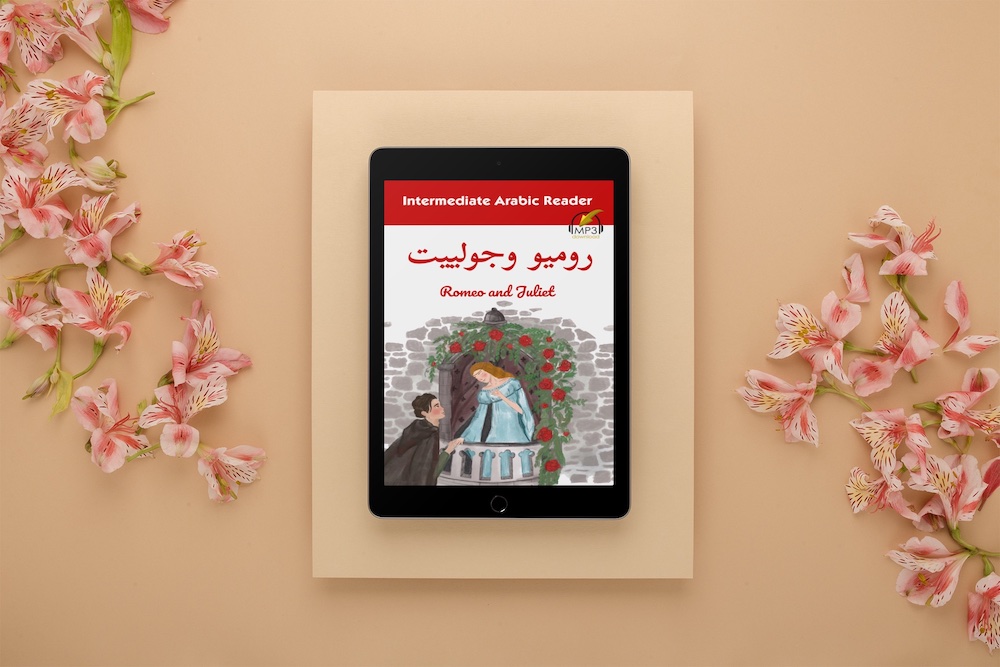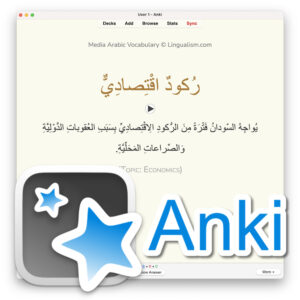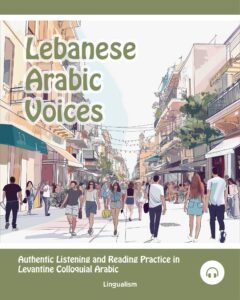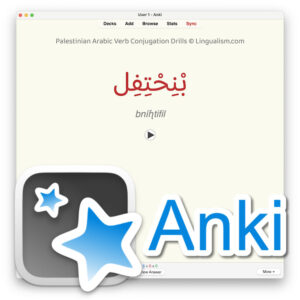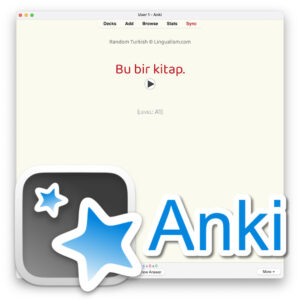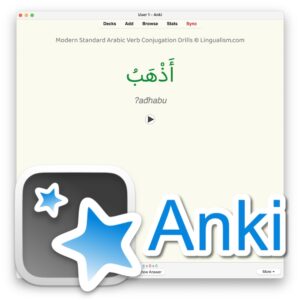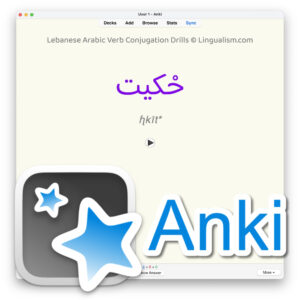The timeless love story of Romeo and Juliet has been brought to life for the first time as a novelized adaptation for learners of Arabic. This story was chosen as it is well known to Western audiences; being familiar with the characters and plot of a story will help you focus less on what the story is about and more on the language.
The story has been divided into eight chapters of similar, manageable length for learners. Accompanying audio, professionally recorded by a native speaker, is available to download free of charge.
Each chapter has three parts:
- The Arabic text, which is voweled (that is, written with tashkeel diacritics) to aid in the recognition and pronunciation of each word.
- An extensive glossary that contains words and phrases the first time they appear in the book. All but very basic words are glossed.
- The English translation.
When the name of a character or place makes its first appearance in the book, it is shown in bold.
Words and phrases that appear in the vocabulary section (glossary) are underlined in the text with a subtle dotted line. They are organized by order of appearance and grouped by the page number on which they appear.
A noun or adjective will be listed in its singular form, and if its plural is irregular, this will be shown in parentheses.
A verb will be shown in its base form followed by a reference code in small square brackets. This corresponds to a table showing the verb’s complete conjugation patterns in Lingualism’s book Modern Standard Arabic Verbs. The masdar (gerund) of unaugmented (measure I) verbs is given in parentheses. The masdar for augmented verbs is also normally given when they appear in the book.
Many nouns (including masdars) and adjectives (including active and passive participles) act as adverbs in the indefinite accusative case or in conjunction with a preposition. These are often glossed as the basic form of the word, so you can see each word’s original meaning and how it can be used as an adverb in context.
There are many ways to use the glossary, English translation, audio, and Anki flashcards as pre-reading and post-reading tools to improve your overall comprehension of the Arabic text. It all depends on your learning style and what you find works best for you. For example, you can try listening to the audio before you read the text to see how much you understand going in. You can also read a chapter in English first, which will help you guess new vocabulary when you see it. You can study the vocabulary for each page or chapter before reading it. Alternatively, you can look up new words as you encounter them in the text, and then read the chapter again to see how many of the new words you can recall. You can refer to the English translation when you can’t work out the overall meaning of a sentence, even if you know each word. In any case, multiple readings are recommended to build reading fluency and memorization of new vocabulary. Which strategy works best for you? Please let us know in the comments.
This article was adapted from the Introduction of the book Intermediate Arabic Reader: Romeo and Juliet.

